Index


Review: Good OC potential and cooling performance
EVGA is currently offering a total of eight different GTX 760 cards, so even if we decide to pick up a GTX 760 from the house of EVGA, we still have to choose one of them. Of course, the cards differ in the type of cooler, amount of memory and factory clocks. Some ship with 2GB of memory, while some have 4GB, there’s a choice of dual or single fan coolers and a range of factory overclocked cards, with the GTX 760 FTW clocking in at 1085MHz.
At the heart of the GeForce GTX 760 lies the same GK104 GPU that is used in the GeForce GTX 770, but remember that the GK104 GPU is used on GTX 690/680/670/660Ti cards as well. The GeForce GTX 760 will be replacing the GeForce GTX 660 Ti in Nvidia’s lineup.
Today we’ll take a look at the recently introduced GTX 760 Superclocked 2GB with an ACX (Active Cooling Extreme) cooler. We already had a chance to try out the ACX cooler when we tested the GK110-based GTX 780. However, the ACX cooler used on the GTX 760 is different in a few ways. Obviously it is shorter, since the card is shorter than the GTX 780 and it also has to deal with a lot less heat.
Aesthetically it closely resembles the original ACX cooler, as you can see.
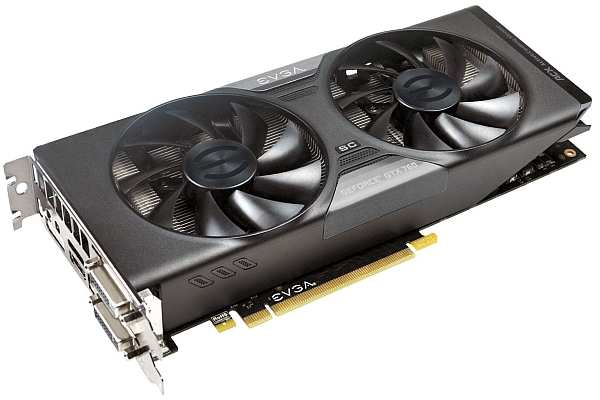
The GTX 760 is stock clocked at 980MHz, while the Boost clock is 1033MHz, whereas the GTX 660 Ti is clocked at 915MHz and capable of hitting 980MHz on Boost. Since the GTX 760 has 1,152 CUDA cores, while the GTX 660 Ti boasts 1,334, we can assume that the GTX 760 gets most of its extra performance from higher clocks. However the bandwidth is better, too. The GTX 660 Ti features a 192-bit memory bus, while the GTX 760 has a 256-bit bus.
The standard memory configuration for the GTX 760 is 2GB of GDDR5 memory, but some partners including EVGA have introduced 4GB cards as well. On the whole the GTX 760 seems to be finely tuned for 1080p gaming, and it is also direct threat to the ageing GTX 670.
The EVGA GTX 760 SC ACX comes factory overclocked from reference 980MHz to 1072MHz for the GPU, while the memory is left at reference 1502MHz (6208MHz effectively).
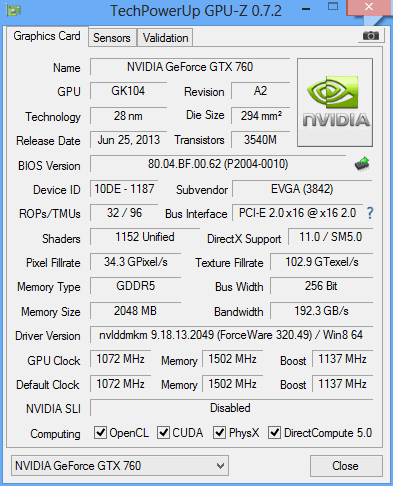
The GTX 760 is PCIE 3.0 compatible and it will allow you to play games with enabled physics (PhysX), to improve graphics effects by using HBAO or advanced anti-aliasing techniques (FXAA/TXAA) and of course the card has enough power for smooth 3D gaming (3D Vision).
Following the introduction of the GTX 760, Nvidia’s complete Geforce 6xx/7xx lineup consists of the following cards:
Geforce GTX TITAN (GK110)
GeForce GTX 780 (GK110)
Geforce GTX 690 (2xGK104)
Geforce GTX 770 (GK104) Geforce GTX 680 (GK104)
Geforce GTX 670 (GK104)
Geforce GTX 760 (GK104) Geforce GTX 660 Ti (GK104)
Geforce GTX 660 (GK106)
Geforce GTX 650 Ti BOOST (GK106)
Geforce GTX 650 Ti (GK106)
Geforce GTX 650 (GK107)
Geforce GT 640 (GK107)
Geforce GT 630 (re-branded Geforce GT 440)
Geforce GT 620
Geforce GT 610
In the box you’ll find:
User guide
Quick installation guide
Driver DVD
A small note about PCIE 3 compatibility
EVGA sticker set (Enthusiast Built)
EVGA full size poster
EVGA case badge
DVI to VGA dongle
2x Molex to 6-pin power adapter
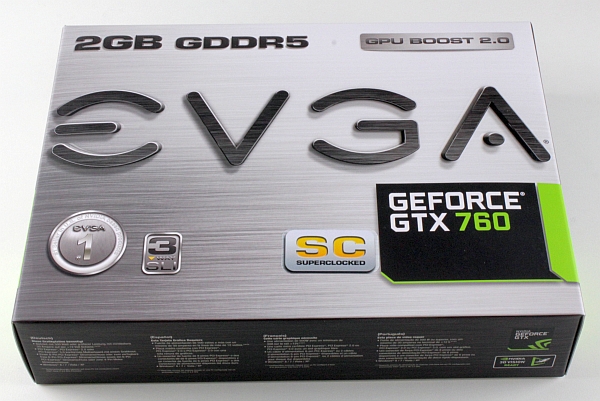
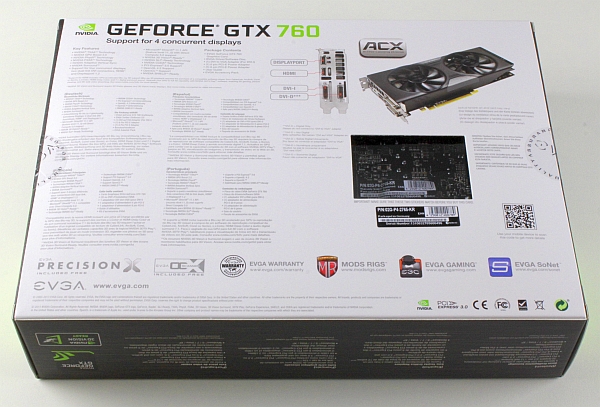
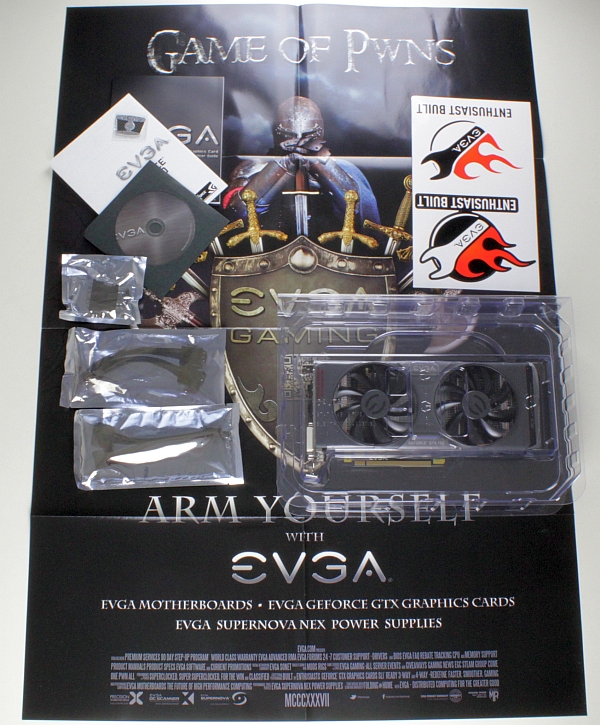
To cool the GTX 780 EVGA came up with the dual slot ACX (Active Cooling Xtreme) cooler. The card together with the cooler is 27cm long. With the ACX cooler EVGA took a step in the right direction, as it is perfect for enthusiasts keen to use the GTX 780 card in three-way or four-way SLI setups. Before we go further let’s see how it looks. It is a dual-slot, dual-fan cooler and it looks mean. You can find out more about the original GTX 780 ACX cooler here.
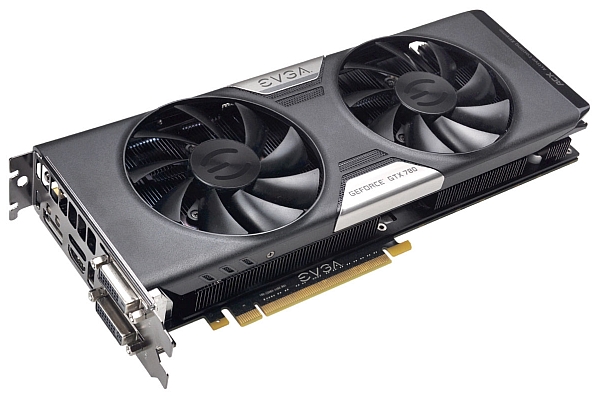
With the GTX 760 we got a new ACX cooler. The EVGA GTX 760 SC ACX is 24.5cm long, hence its cooler is a bit smaller than the original.

All ACX coolers we had a chance to try out use the same PLA09215B12H fans (90mm with 9 blades) made by Power Logic.
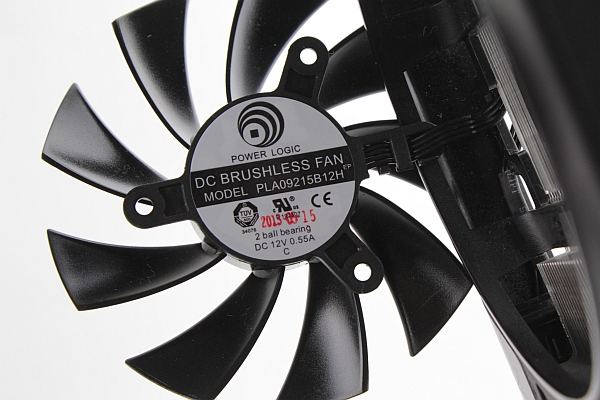
EVGA says that the blades used in the fans are up to 700% more rigid than fan blades used in competing fans, which also results in a 25% weight reduction. We’re not aerospace engineers, but the blades feel very tough indeed.
The fan uses a double ball bearing design which should last a bit longer and generate less noise even after a couple of years of wear. However, we noticed that one of the fans generated an unusual noise, but EVGA responded by promptly sending us a replacement card, as it deemed the first one defective. The replacement card worked like a charm.
This is what the bearings look like in real life, opposed to standard sleeve bearings used in most fans.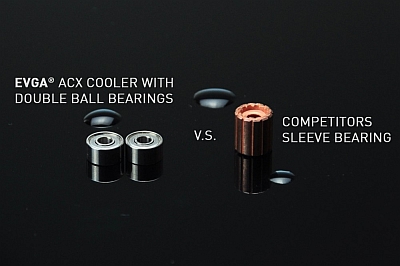
EVGA designed a special heatsink with a lot of dissipation surfaces. The heatsink was designed to minimize airflow turbulence between the fans using air barriers.
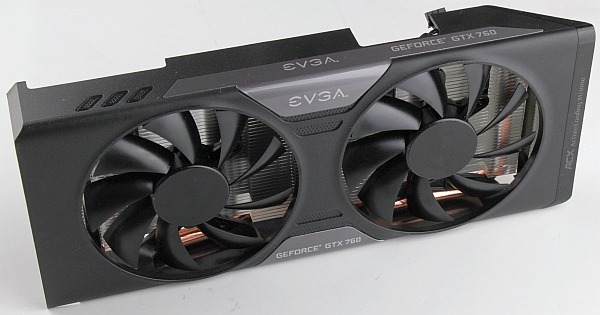
The ACX cooler for the GTX 760 comes with three 8mm thick heatpipes that are in direct contact with the GPU surface.
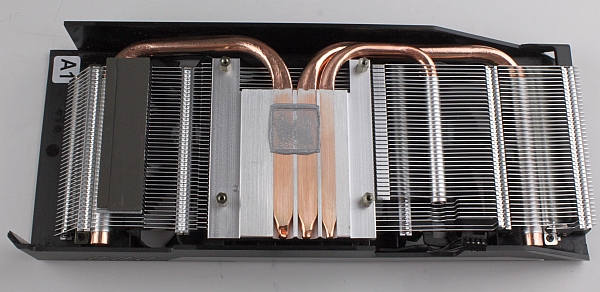
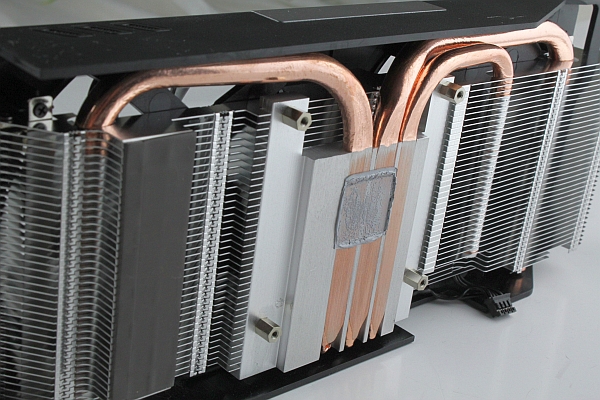
A part of the heatsink, i.e. the gray strip on the left, is in contact with the power components.
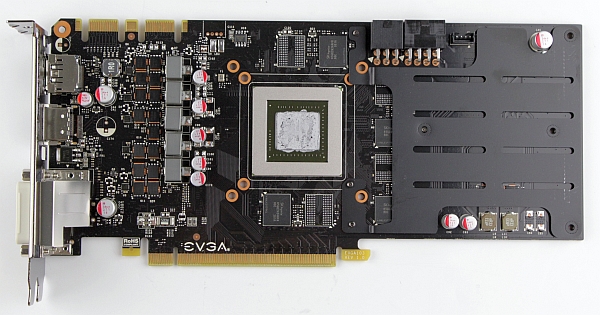
There’s an unusual addition under the heatsink, on the PCB. It’s the second baseplate which covers the almost completely empty PCB space at the end of the card. We’re really not sure why EVGA placed it there, since this part of the card has no memory modules or VRM components.

The GTX 760 SC ACX card is 24.5cm long and 11.5 cm high. EVGA uses a non-reference PCB which is longer than the reference one, so it offers a stable base for the bulky ACX cooler.

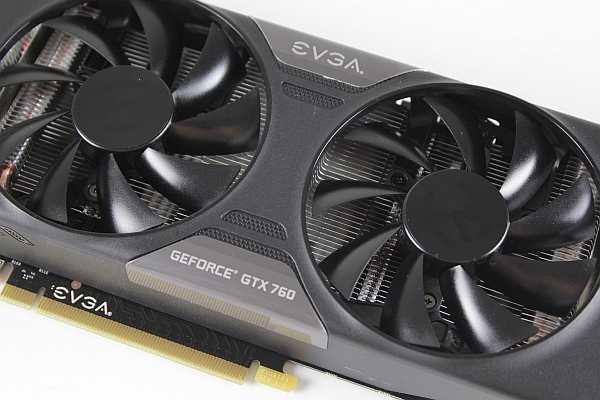
The card has 2GB of GDDR5 memory, courtesy of Hynix (model H5GQ2H24AFR-R0C) specified to run at 1500MHz or 6000MHz GDDR5 effective. Four out of eight memory modules are at the GPU side of the PCB, while the rest are placed at the back.
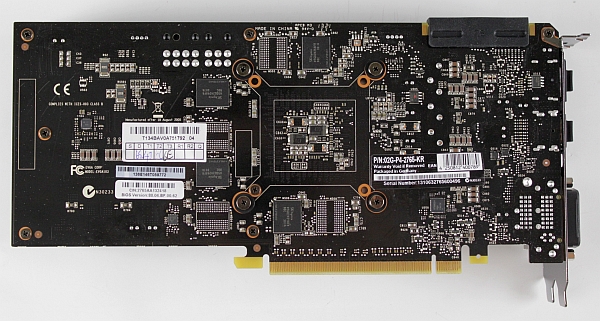
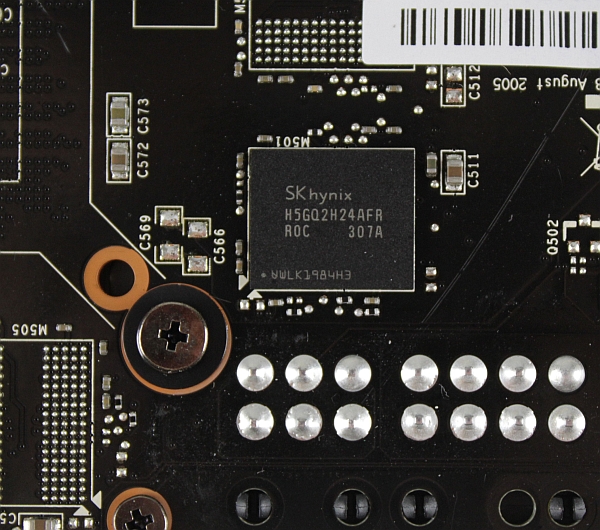
In the following pictures you can see what a reference GTX 760 looks like.
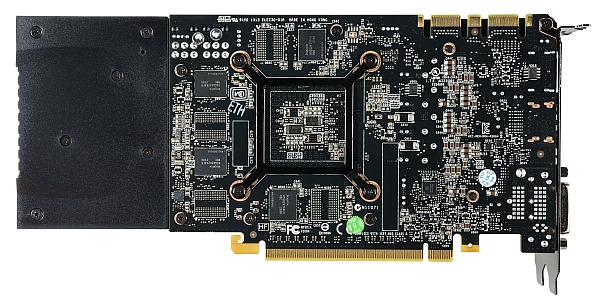
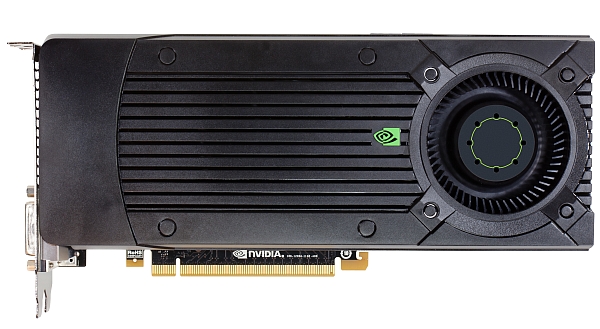
EVGA GTX 760 SC ACX features one standard HDMI connector (1.4a compatible), one standard DisplayPort out and two dual-link DVI outs.
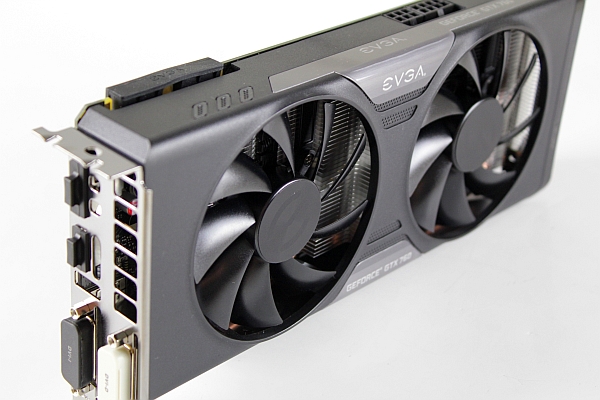
The card is ready for multi-GPU action, be it in standard two-card SLI, or 3-way and 4-way SLI. Therefore the GTX 760 SC ACX features two SLI connectors.
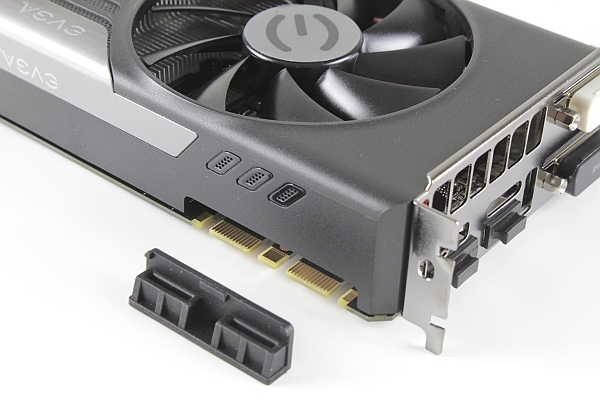
The GTX 760 is said to have a 170W TDP, compared to 150W TDP for the GTX 660 Ti and 170W TDP for the GTX 670. EVGA went a step further and decided to include both 6-pin and 8-pin connectors on the card. This configuration is good for up to 300W of power. The reference card uses 2x6-pin power connectors. The GTX 760 SC ACX card uses Richtek RT8802A voltage controller.

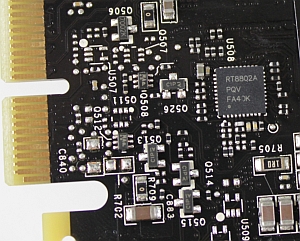
Testbed:
- Motherboard: EVGA Z77 FTW
- CPU: Ivy Bridge Core i7 3770 (4.5GHz)
- CPU Cooler: Gelid The Black Edition
- Memory: 8GB Corsair DDR3 2400MHz
- Harddisk: Corsair Neutron GTX 240GB
- Power Supply: CoolerMaster Silent Pro 1000W
- Case: CoolerMaster Cosmos II Ultra Tower
- Operating System: Win8 64-bit
Drivers:
- Nvidia 320.49
- AMD 13.6_Beta2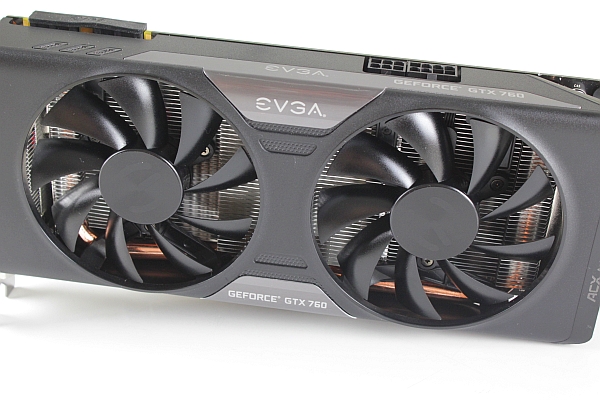
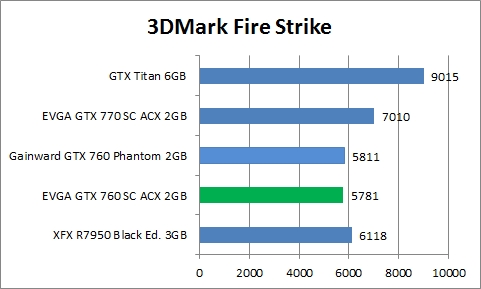
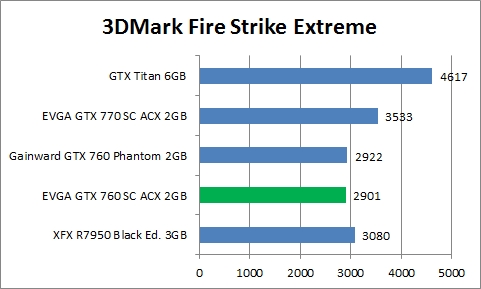
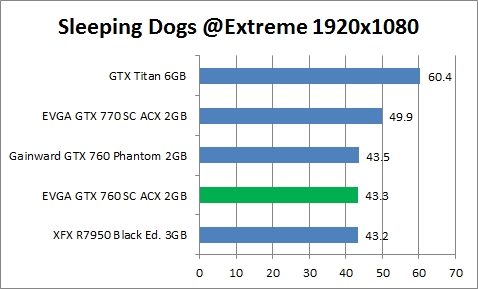
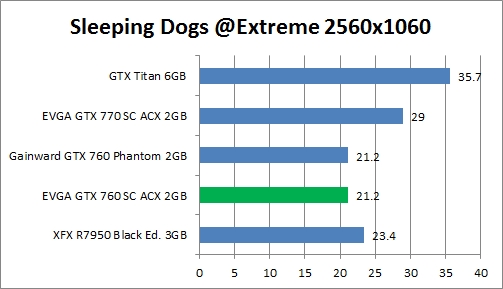
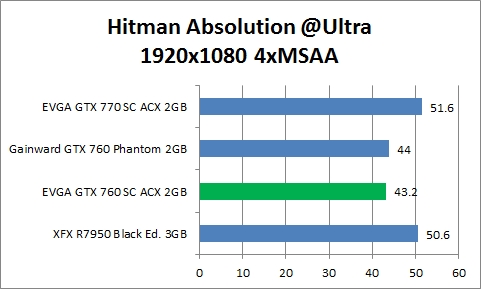
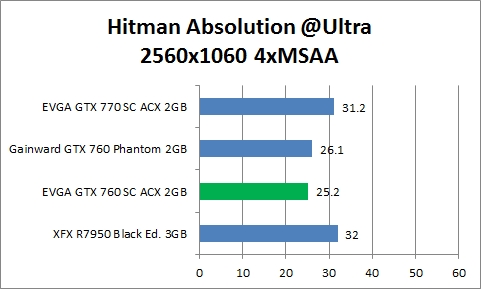
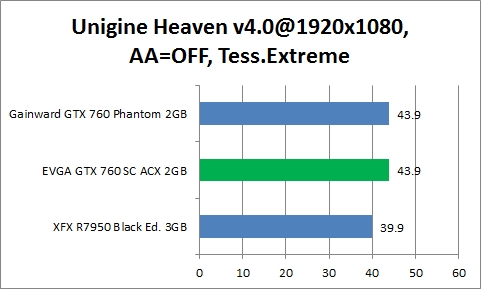
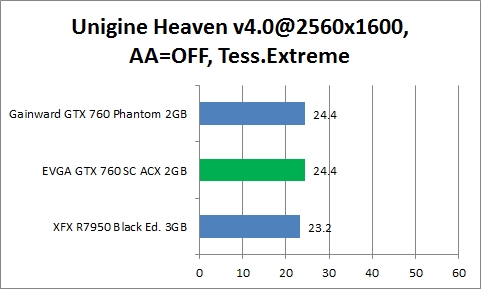
Geforce Experience is designed to make PC gaming easier for all gamers, and ShadowPlay, which is an upcoming Geforce Experience feature, lets gamers record their favourite gaming moments without the performance penalty of software-based solutions.
When GeForce Experience installs, it will scan your PC for supported games and list them in the client, along with optimal settings personalized to your PC. Gamers can then choose to optimize their games with the single click of a button. Better still, gamers can explore and learn about these settings via interactive screenshots built into GeForce Experience, allowing them to understand the benefits of enabling quality settings before launching the game.
For example, in Sleeping Dogs, Geforce Experience advised us on how to increase the frame rate at 2560x1600. As you can see in the score charts, 69.8 FPS is a good result.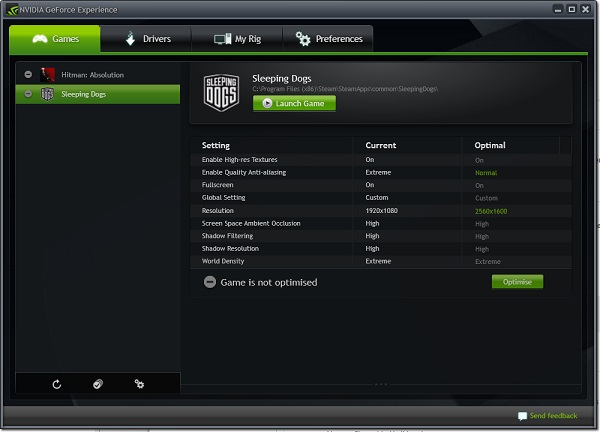
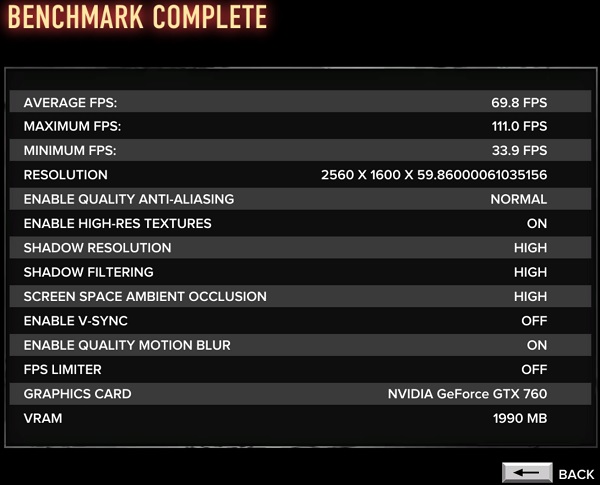
The ACX cooler of the GTX 760 is superior to the reference cooler in terms of performance, but it is not much quieter than the reference fan. However, do note that the EVGA GTX 760 SC ACX is factory overclocked.
The ACX cooler keeps the GPU temperatures below 72 degrees Celsius, while the reference cooler keeps the GPU temperatures below 82 degrees Celsius. While idling or in 2D mode, the card is practically inaudible when inside a closed case.
The fans aren’t too noisy even under load, but they were louder than the rest of our test rig. Since the cooling performance is exceptional, it’s possible to keep the revs a bit lower by trading off a few degrees of heat on the GPU.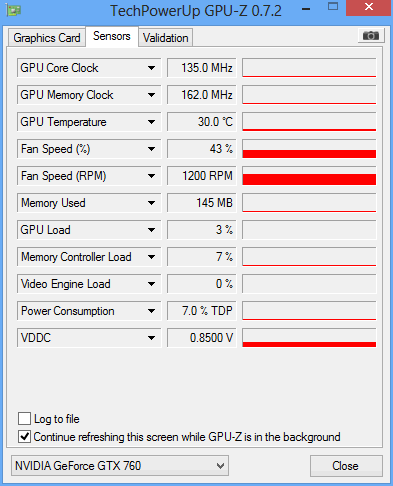
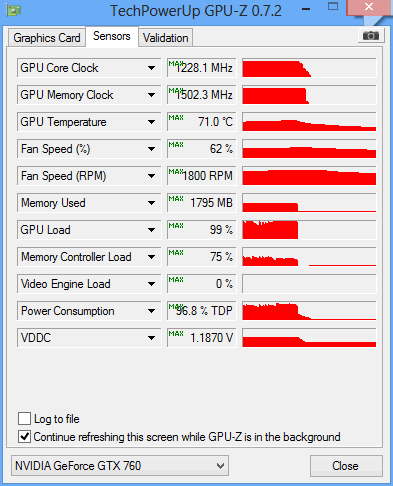
In terms of power efficiency, we can report that the GTX 760 SC ACX can draw a bit more juice than the Gainward GTX 760 Phantom that has the exact same GPU clock. However, the GTX 760 SC ACX is a lot more user friendly when it comes to overclocking, and this detail is probably very important for most perspective buyers.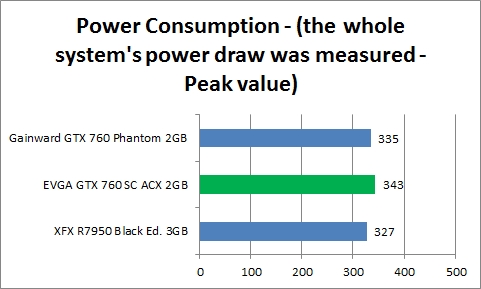
The GTX 760 has a 170W TDP, but EVGA went a step further from the reference design which includes 2x6-pin power connectors and decided to include both 6-pin and 8-pin connectors on the card. We don’t see how we could use some much additional juice, since the GPU overclock is limited as it is. We were able to up the GPU clock by 90MHz and memory clock by 300MHz. This resulted in a 10 percent performance gain. We must admit that a 182MHz over the reference clock is a very impressive result.
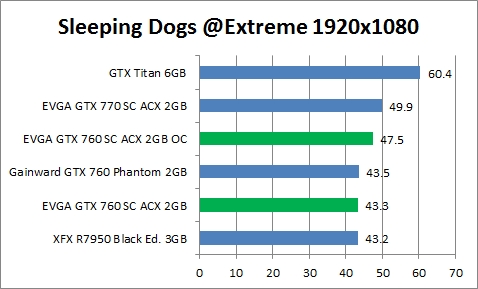
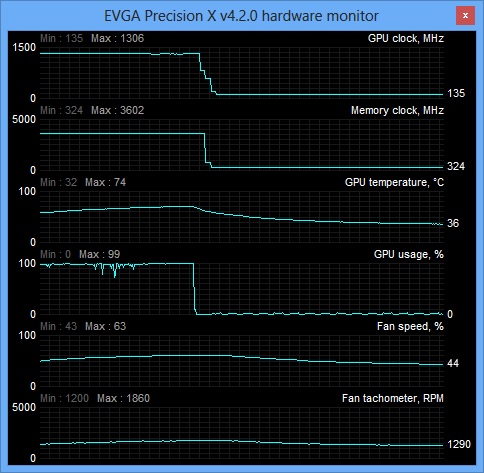
Only a small number of hardcore gamers can afford to pay more than €/$250 for a graphics card. More powerful cards can deliver more eye candy, but for 1080p gaming the GTX 760 should meet the needs of most consumers. Prices start at a rather modes 220 euro and cards that fall in this this recession friendly price bracket are traditionally viewed as the weapon of choice for most gamers, the tradition continues.
The EVGA GTX 760 SC ACX starts at about 240 euro and it is a good example of how a custom design can do a lot for the card and make it more attractive. In addition to good looks, the GTX 760 SC ACX performs better compared to reference cards, thanks to a high factory overclock. In addition, the GTX 760 SC ACX is overclocking friendly and it allowed us to increase the clock to 1162MHz with relative ease. That’s 182MHz above the reference clock.
The GTX 760 SC ACX served us well and if you are after 1080p gaming, cranking up the settings to the High in graphics-intensive games should not be a problem for this card, and the scores prove it.
The ACX cooler is a good performer, but we expected a bit less noise. The cooler is by no means too noisy and it has a lot of headroom for tweaking. If you’re not going after the highest possible clock, it will be quiet, as it keeps the card roughly 10 degrees Celsius cooler than the reference cooler.
The GeForce GTX 760 will be replacing the GeForce GTX 660 Ti in Nvidia’s lineup, but there is really no reason to replace upgrade from a GTX 660 Ti to a GTX 760. The GTX 760 is a good choice for gamers using older Geforce or Radeon cards.
The card strikes a good balance between price and performance, coupled with a powerful cooler and loads of overclocking potential hence it gets out Top Value award.
